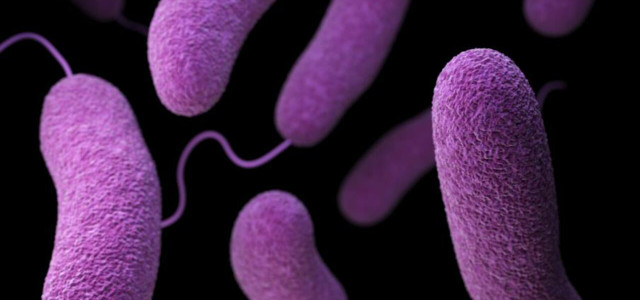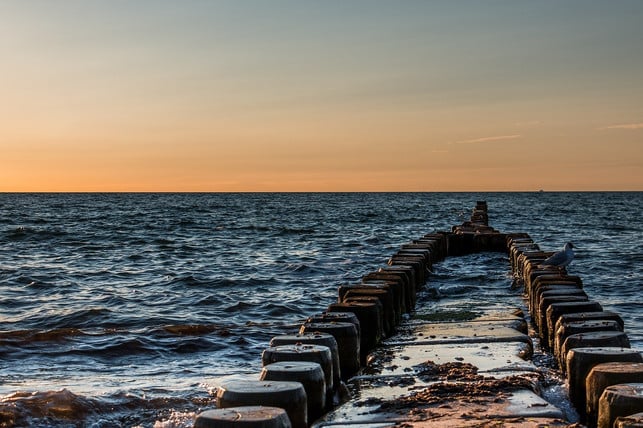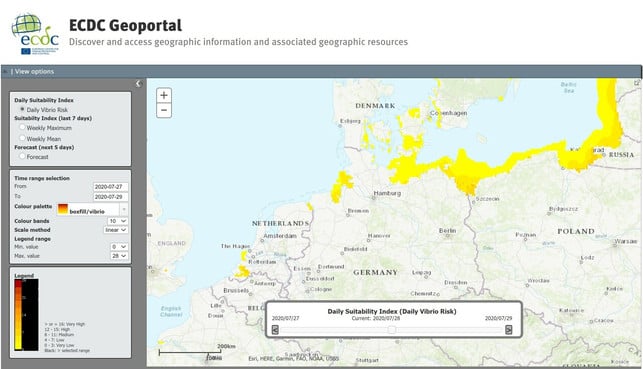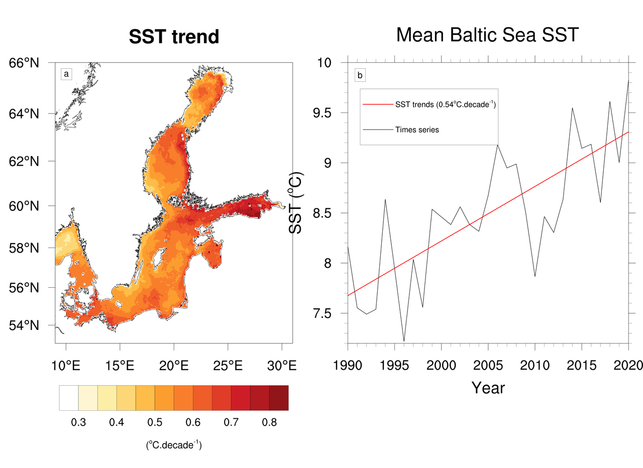
Vibrions can be found in the North and Baltic Sea, but also in inland waters. The bacteria trigger acute infections. Climate change favors its increase.
Vibrions are bacteria. They can be roughly divided into non-Cholera vibrions and in vibrions that can trigger an infection with cholera. Since there is no latter in Germany, we do not go into this type of bacterium here.
Non-Cholera vibrions are also available in German bathing waters, especially in the Baltic Sea. They trigger gastrointestinal, wound or ear infections.
Under what conditions do vibrions occur?

As the Robert Koch Institute (RKI) describes, the bacteria occur in sweet and salt water. Optimal conditions prevail in the Baltic Sea: vibrions feel comfortable with a salt content between 0.5 and 2.5 percent and over 20 ° C water temperature. Therefore, particularly flat or coastal areas are susceptible to vibrions. There the water warms up faster than in deeper places.
Places where fresh water flows into the sea also contain the bacteria with a greater probability, because the salinity in the water is lower.
If the danger to vibrions in the water on the Baltic Sea coast in Mecklenburg-Western Pomerania is increased, the State Office for Health and Social Affairs (Lagus) expresses official bathing warnings. The official bathing water card of the MV state government can also provide you with information about the situation.
What can happen if I come into contact with vibrions?
Open or yet healed wounds are particularly susceptible to infection with vibrions. If you come into contact with bathing water in which vibrions are, you can get infected. Then there is a pain that appears disproportionately strong for the type of wound. In addition, fever, abdominal pain or chills can occur.
But “there is no reason to panic,” says Matthias Gründling, intensive care physician and head of the sepsis dialog at the University Medical Center in Greifswald. “In principle, it is totally harmless. The likelihood that you get infected with it is very low.”
According to Robert Koch Institute (RKI), zero and 20 cases of infections on German coasts were known annually between 2002 and 2019. These occurred primarily in warmer summers. The patient concerned: The inside was almost without exception older and had previous illnesses.
Since the first symptoms occur relatively shortly after the infection – as a rule this takes between four hours and four days – patients can often be treated on the location where they have become infected. This is particularly favorable for vacationers: the inside that do not live near a vibrions that are susceptible to vibrions. At home, the suspicion often does not even fall on vibrion infection.
Can I avoid vibrion infection?
“You can’t protect yourself when bathing,” says Gründling. He therefore advises: “If I have an open wound and the water temperature is over 20 degrees, it is actually not advisable to go swimming.” Because from this water temperature and in the event of moderate salt content, the bacteria with the medical name Vibrio Vulnificus multiply.
How can you treat wound infections?
If wound infection is diagnosed or suspected by vibrions, it is said: act quickly. If it is recognized soon enough, the infection can be treated with antibiotic. Without timely treatment, the infection can spread further. A severe, untreated course of wound infection by vibrions can lead to blood poisoning, amputations or even multiple organ failure with death.
However, severe courses are very rare. The infections are usually easy, especially in young and healthy adults. Older and/or immunocompromised people or people with previous illnesses such as cancer or diabetes are more susceptible.
Can I also get infected with food with vibrions?
There is another way to get infected with vibrions: if you eat raw fish or seafood from pathogenous water, there may be gastrointestinal inflammation. In Germany, however, this is rather rare and usually only occurs in connection with imported fish.
In children, ear infections are also diagnosed, which they pull in vibrion water when bathing.
Where do vibrions occur in Germany?

In Germany there are only a few cases related to vibrions: even in warmer summers, no more than 20 cases became known between 2002 and 2019. However, the RKI assumes that there were more infections that were either not reported or not even diagnosed.
Since 2020 there has been an obligation to report with an infection with vibrions. In this way, health authorities can determine increased occurrence of the bacteria and inform risk groups if necessary. There is no test to find out whether vibrions are contained in the bath water. However, their occurrence is unlikely if the salt content of the water is below 0.5 or over 2.5 percent or the water is colder than 20 ° C.
On the website of the European Center for Prevention and Control of Diseases, there is an interactive map on which you can see when and where vibrion infections have already occurred in Europe. You should be careful at the marked bathing spots, especially with open wounds.
What can I do if I suspect an infection with vibrions?
If you suspect an infection with vibrions, i.e. with medical staff as soon as possible and, if necessary, be prescribed an antibiotic. So you avoid that the wound continues to ignite and make surgical intervention necessary.
What effects does climate change have on vibrions?

It is not unusual in itself that vibrions occur in waters: they live there, just like other living things. However, the Federal Institute for Risk Assessment (BfR) expects a global increase in vibrions. Reason for this: climate change. The seas warm up and this increases the bacteria.
The BFR also fears an increase in gastrointestinal infections from vibrions. The international trade in fish could come into contact with imported fish and other marine animals worldwide, which come from vibration -containing waters. So make sure to buy regional organic products if you want to eat fish. Naturland and fish products from Aquacultures from Bioland are subject to the strictest requirements.
The WWF Fish Council helps you to keep an overview.
Professor Markus Meier, the leading expert in the climate and climate change in the Baltic Sea region, explains the temperature rise of the sea as follows: “The marginal seas warm up much faster than the deep oceans. Among them, the Baltic Sea is one of the leaders: no other margin sea worldwide, for which there is observation data in the last decades. Ostsee surface water from one to three degrees Celsius. ”
An evaluation of Dr. Cyril Dutheil at the Leibniz Institute for Baltic Sea research Warnemünde (IOW) from 2022 has even determined a temperature rise of 1.6 degrees Celsius over the past three decades in the surface water of the Baltic Sea. The graphic visualizes the measured temperature rise (SST = Sea Surface Temperature).
With material of the dpa
Read more on utopia.de:
- Accelerate wound healing: This is how your wounds heal faster
- How climate change threatens our health
- Zerkaria: What you need to know about the parasites in swimming lakes
** marked with ** or orange underlined Links to sources of supply are partially partner links: If you buy here, you will actively support Techzle\.com, because we will then receive a small part of the sales proceeds. More information.